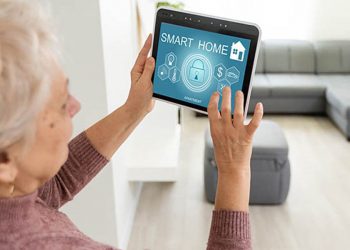By this we mean control processes that run without human intervention, i.e. automatically. What does this have to do with smart building technologies? By this we mean systems that learn from everyday life, automatically adapt and adjust their behavior to the environment.
In buildings, a wide variety of systems often work together and must “talk” to each other, i.e. be compatible. An example is the weather-dependent watering of the garden, the adjustment of the comfort temperature depending on who is currently in the house, or the control of heating and ventilation in meeting rooms – depending on the number of meeting guests.
The new possibilities in assistance
In the Assisted Living field, the systems detect deviations from the daily routine and sound the alarm: for example, if the refrigerator is not opened in the morning to get out the milk for the coffee. Or if the patient does not even get up in the morning, i.e. the sensor in the floor in front of the bed is not triggered. The alarm system registers a movement that should not be with the sensors – for example, if they have communicated to this that they are on vacation for 2 weeks – and sounds the alarm. The vacuum cleaner and the lawn mower are active only when they are not at home or the lawn is not in use. For example, if their children are playing on the lawn, the lawn mower goes to its base station.
Often criticized: The collection of data
In order to implement these automatic controls, data is needed. The collection of data is a common criticism – but this information is the only way to recognize routines and to be able to adapt the control to our lives. Smart devices should support us: The focus is on people.
Therefore, when buying, pay attention to what data is collected and what happens with it. Are they processed in-house or in a cloud? Who has access to it? Ask questions, be persistent. Decide for yourself which limits are available to you – and thereby act competently and purposefully.
Author: Anja Herberth
Chefredakteurin

















